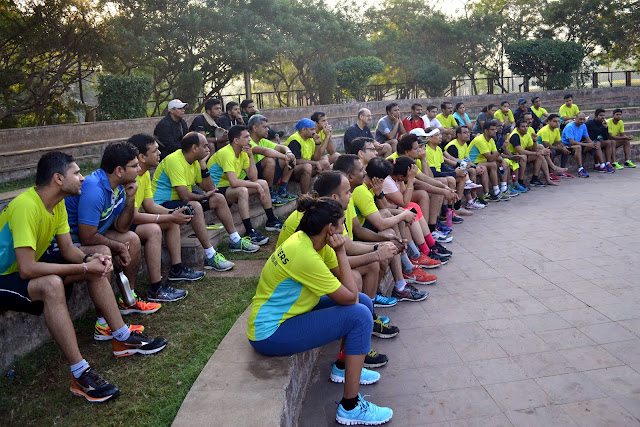Happy
Feet!!!
How
to choose the right running shoe
Welcome Runners!
If you are an aspiring runner,
and you are looking for some guidance for choosing the right gear for your
feet, you’ve stumbled upon the absolute treasure-house!
No! We are not giving you the
secret formula of shoes of the best marathoners of the world, because believe
us when we say, if we gave you their shoes, your performance might deteriorate instead
of improving.
Just like glasses, every person
would have a different and distinctive need for their feet than the rest. And you’d
know when it comes to you. If it hasn’t, let this blog be you first step
towards having a ‘Happy Feet’.
As you set to find the best your feet can get, firstly you should be able to figure out what kind
feet you have, its shape and size; and what kind of shoe fits you properly from
heel to toe giving your feet the best comfort. Your current shoes are also a
great story teller. Make sure you wear them when you are visiting the store.
Let’s give you a better idea how your next pair should feel on your feet.
The
three main foot types are
A.
Flat
feet: Imagine stepping on an
insect. There’s 0% chance that it would survive! Flat feet tend to have
fallen arches, making them flexible and prone to overpronation, an inward
rolling motion.
Weakness: prone to injuries like plantar fasciitis, shin splints, ankle
strain.
B.
Neutral
feet: These are the most normal variety. A neutral foot lands on outside of
the heel, then rolls inward (pronates) to absorb shock and support body weight Luckily,
you can wear the widest varieties of shoes available in the store.
Weakness: Due to effective shock absorption neutral feet are a boon, but are
not immune to running injuries.
C.
High-arched: The insect who
you stepped on, is probably having a party tonight. The arches in these type of
feet are particularly defined, the feet end up being rigid, leading to
supination, or landing on the outside edges of the feet.
Weakness: shin splints, plantar fasciitis, bunions, heel spurs
There are tools like ‘Video Gait Analysis’ and
‘3-D Foot Mapping’ which assist you in precisely determining the kind of feet
you have. Once you do that, finding the right shoe becomes easier and you are closer
towards identifying your feet’s soulmate. But here are some significant DONT DO things you should keep in mind.
1. Don't buy only because it looks cool! - You might want to look fashionable while buying shoes, but don't let that be the only criterion. Often, when you get a shoe that looks cool, you end up hurting yourself. When you buy, think feel and fit, not fashion.
2. Don’t buy shoes that are too small - Tight-fitting shoes lead to blisters and black toenails. Women in particular are used to wearing their shoes close-fitting, as they're often more self-conscious about the size of their feet. There should be room enough in the forefoot—about half an inch.
3. Don’t buy shoes in morning - Your feet start swelling in the morning and they don't stop until about 4 p.m. That's as big as they're going to get. Hence one should always buy shoes in the evening.
4. Don’t assume your size - An 8 in an Asics is not the same as an 8 in a New Balance or Nike. Sizes differ because of different lasts (foot forms), the different shape of the upper, and the way the shoe is stitched together. Have your feet measured every time you buy, and always try the shoes on for fit.
Knowing your arch type or running mechanics isn't the whole story. You still need to pinpoint shoes that match your foot's contours and movements. Your shoe should complement and support your stride. Before buying, take a short run around the store, or on a treadmill to test the fit, function and comfort before you make your final purchase. It should literally feel like a part of your foot, working in concert with your natural foot shape and biomechanics.
To prevent injuries replace your shoes every 1200 – 1500 kilometers. Running in old, worn-out shoes is one of the most common causes of running injuries, and also, old shoes look OLD. Running often cause shoes to lose their cushioning, stability and shock absorption. You’ll know when you need to replace your shoes when you start feeling uncomfortable. Take a stroll in the store and try some new shoes and you’ll realise if you really need a new pair.
We also urge you to get an understanding of your feet through Video Gail Analysis, as it is one of the most important tools to determine which kind of shoe suits you best. Later, you may want to surf some online shopping websites so that you get better deals. Let's crystallise our dream of 'Digital India' along with our running dream, eh?
For a serious runner, deciding to buy running shoes is almost like purchasing a house or a car; you ought to spend a lot of time in them, so you are absolutely sure you have Happy Feet!













